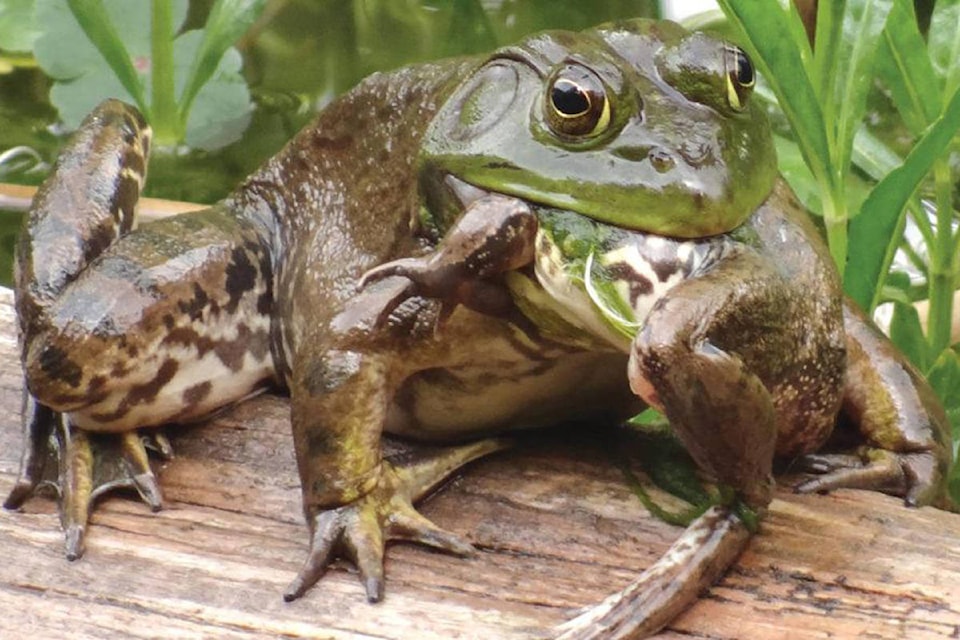The invasive American Bullfrog has been migrating from Idaho into the Creston Valley via the Kootenay River since 2015.
The Ministry of Forest, Lands, Natural Resource Operations and Rural Development is currently working on a bullfrog control program to locate and attempt eradication of the invasive American bullfrogs in the Creston Valley.
“We have a whole team, myself included, that work on the American bullfrog control effort,” said American Bullfrog Program coordinator Matt Morrison. “Last year, the Central Kootenay Invasive Species Society was doing work related to bullfrog control. And this year, the province took the lead on the program. We’ve been running since May; we’ve been looking for bullfrogs throughout the whole valley.”
The four-person team traps and surveys the bullfrogs before euthanasing them, focusing on tadpoles and juvenile frogs to decrease the population.
“Last year we did a lot of work on Mawson Lake right on the border,” said Morrison. “There was a breeding event that occurred in 2017, a population explosion, and in 2018, we saw what we call a metamorphic explosion. That’s the tadpoles emerging out of the water as frogs. We caught about 400 frogs.”
This year the team is once again focusing its efforts on Mawson Lake, however, several wetland areas in the Creston Valley have been affected by the invasive species.
“This year, we found multiple new breeding sites in several wetlands located in the Creston Valley,” said Morrison.
The Ministry of Forests will continue their efforts to eradicate the bullfrog to the end of October.
“We call it quits at the end of October,” said Morrison. “It begins to be too cold for the bullfrog, and that’s when they start their winter buried deep in the mud till next spring.”
This year Morrison expects to capture close to 1,500 bullfrogs in the Creston Valley.
“This year we did not see a population explosion like we saw the previous year, which suggests that we were successful in preventing additional breeding in Mawson Lake,” said Morrison. “What that tells us is that if we put the effort in and remove bullfrogs from the system, we can prevent breeding from occurring, drastically reducing the number of bullfrogs that we’re seeing.
For information on how to identify bullfrogs, visit the CKISS website at www.ckiss.ca. Bullfrog sightings can be reported by phone: 250-354-6333 or email kootenaybullfrog@gov.bc.ca. (Remember when reporting sightings, please note where and when you spotted/heard it, and take a photo if possible.)
Also read: B.C. conservation officers: Don’t leave food out ahead of bears’ foraging season
Like us on Facebook and follow us on Twitter
